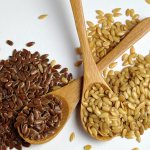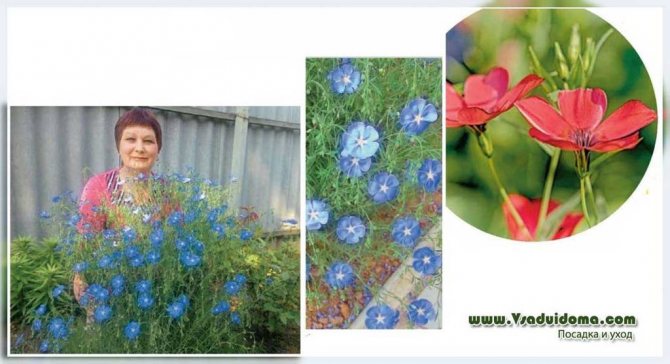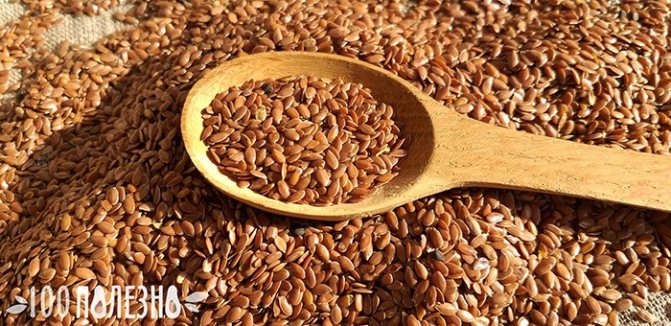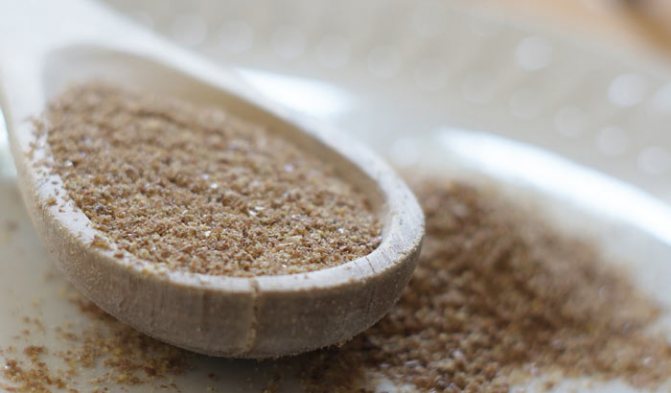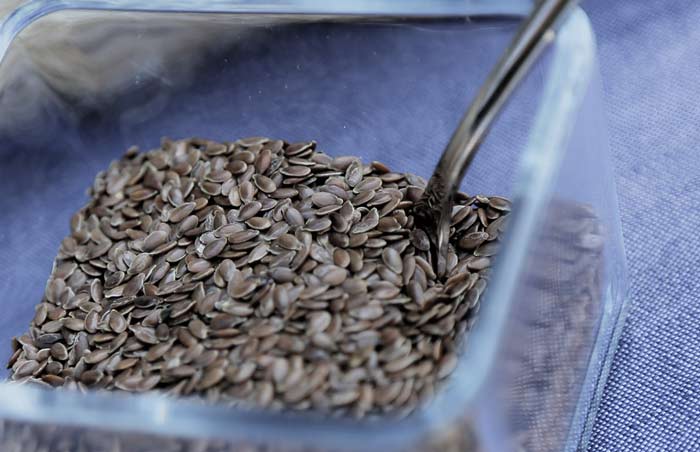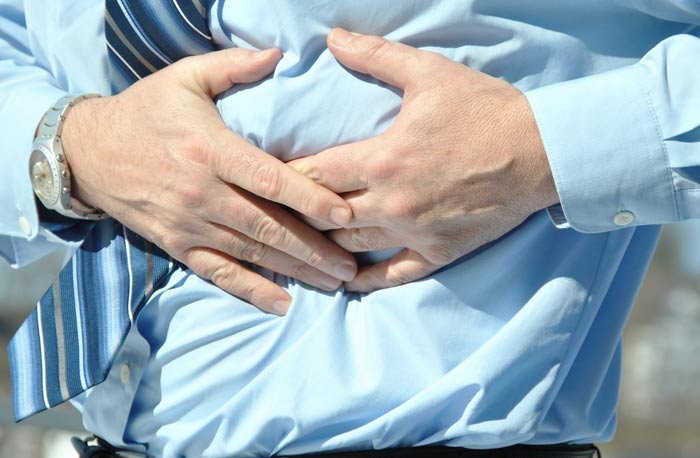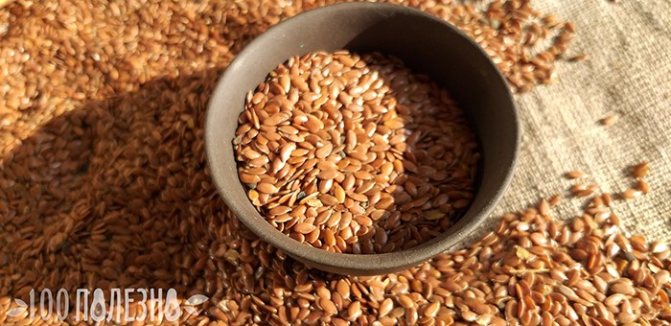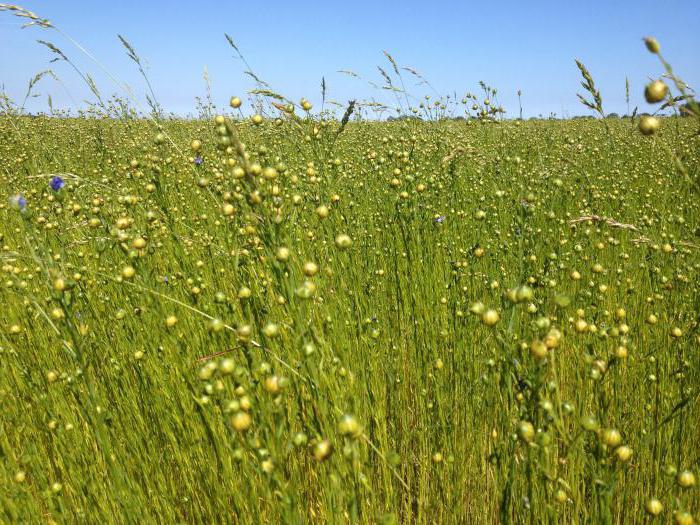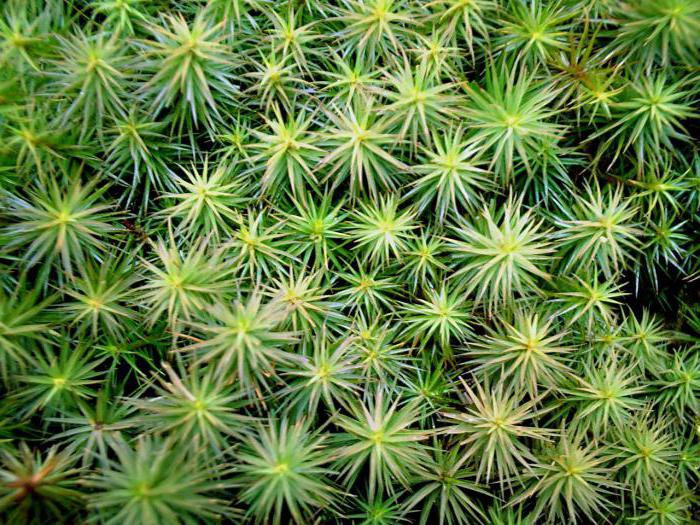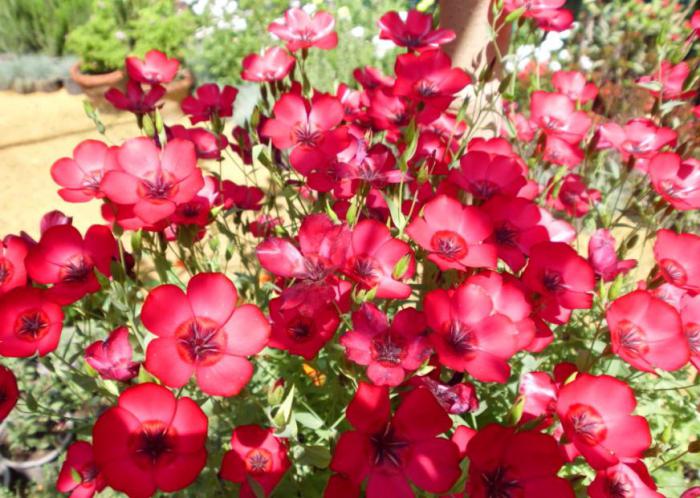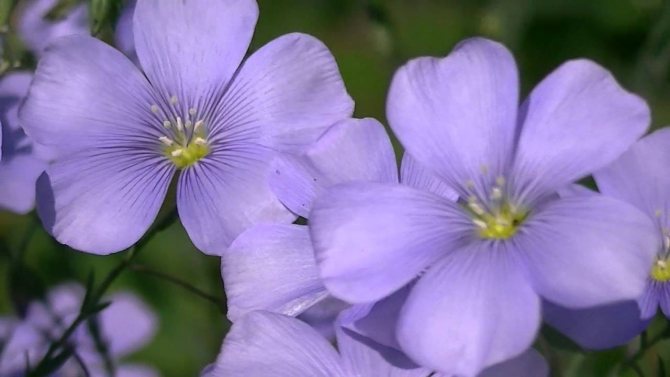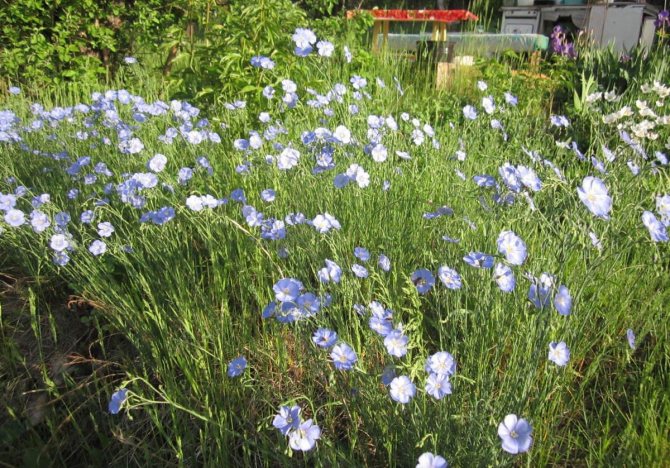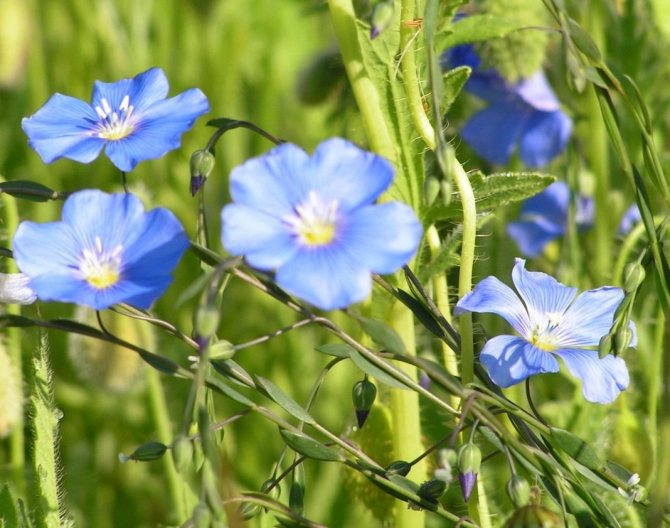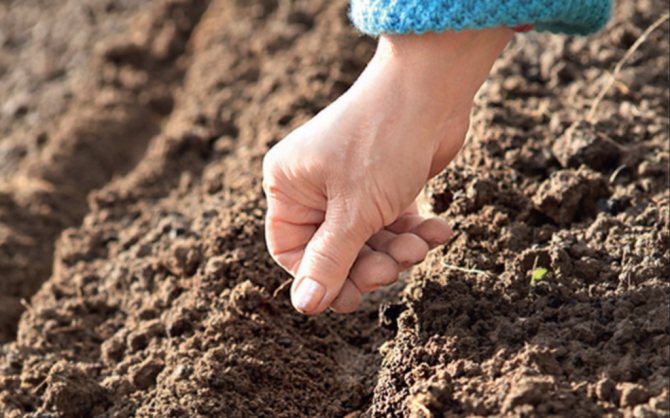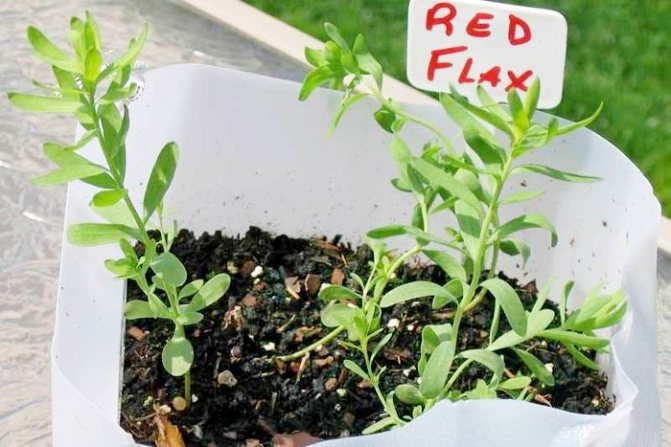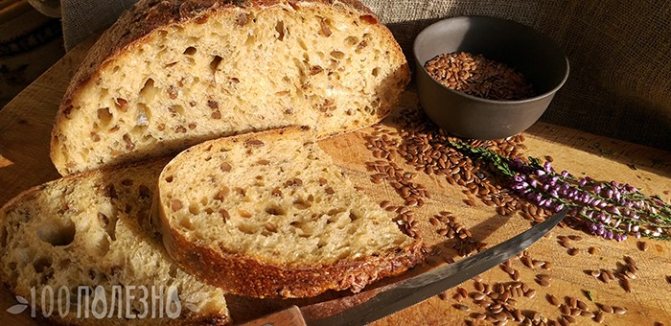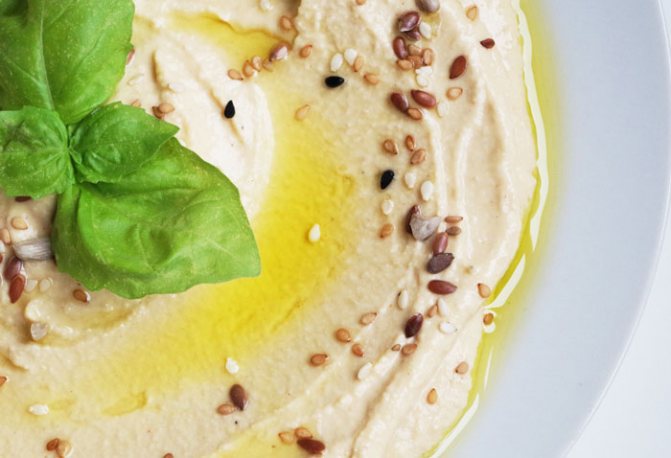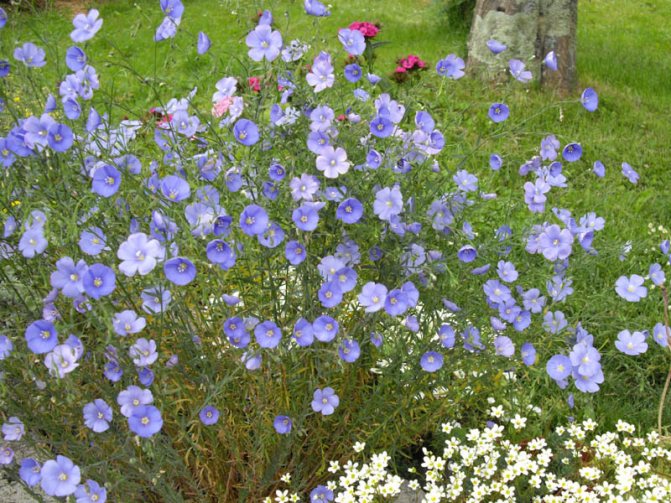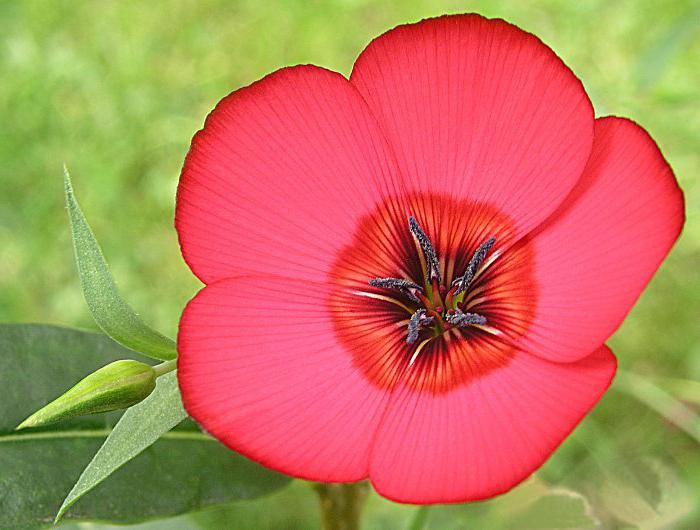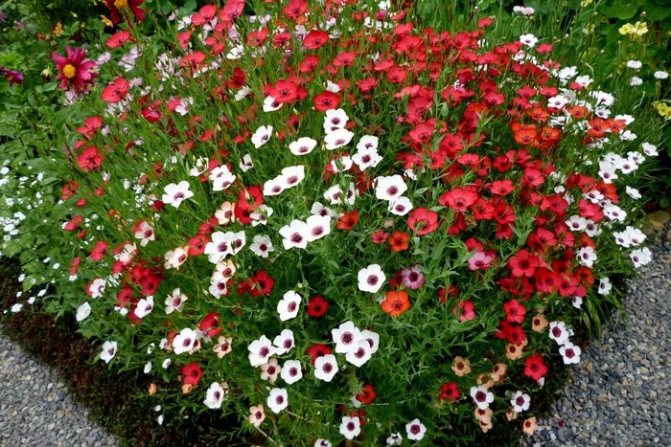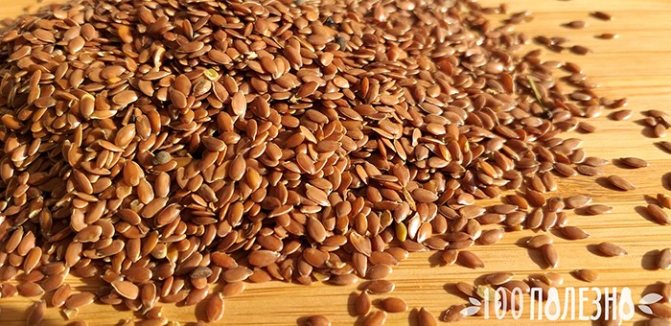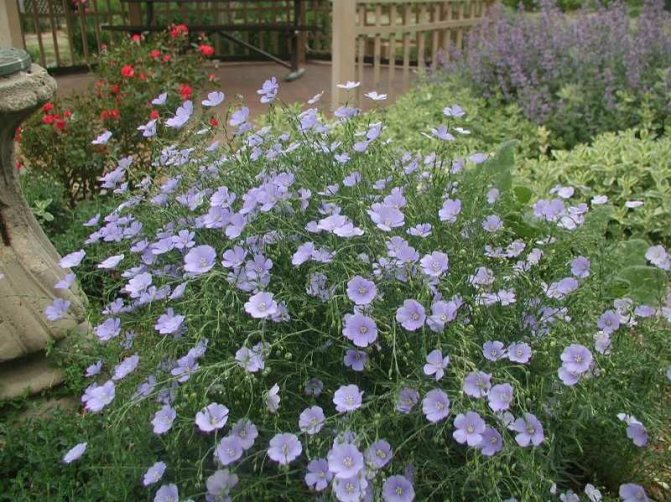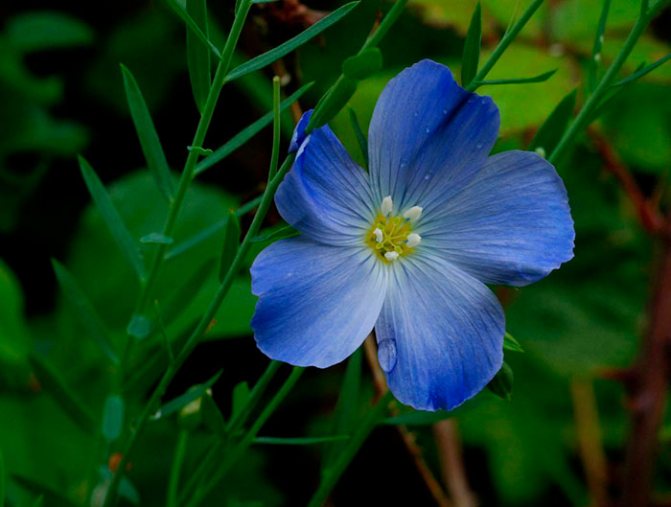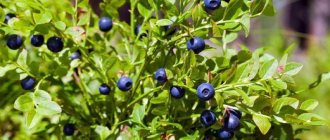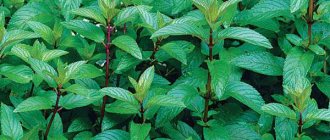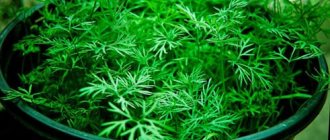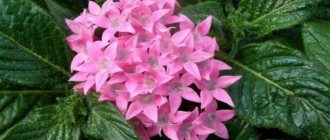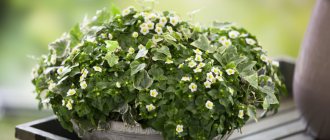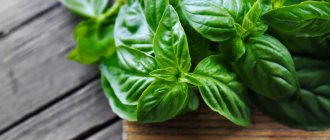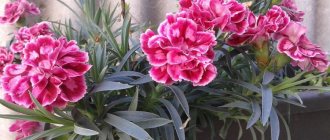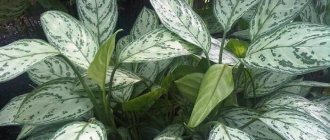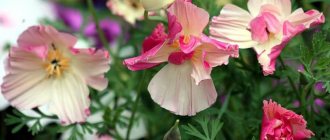Flax is a genus of plants in the Linaceae family. These are annual and perennial grasses with whole leaves growing alternately or sometimes oppositely. Up to 200 species of culture are known, the most popular of which are: yellow flax, perennial blue, sowing, northern. Flax is a culture known for a long time, used by representatives of various industries, for example, for livestock feed, for creating medicines, for obtaining threads. Flax crops during flowering are like a slightly wavy lake, in which the azure sky is reflected.
Flax is perennial. Cultural history and its application
It is not at all surprising that many gardeners choose flax for planting on their site. This plant has a rich history, there are many legends and stories about it.
- In Russia, flax has always been held in high esteem. If bread was for the whole head, then flax was for the soul.
- Flax is one of the most ancient cultures. During archaeological excavations, the remains of food from flax seeds, the remains of threads, fabrics and ropes were found.
- In India, about 9,000 years ago, linen fabric was first made. They began to sew clothes from it, which immediately replaced clothes from animal skins. Linen clothes were more hygienic.
- In Ancient Egypt, flax was revered even more. Egyptian weavers have achieved incredible skill in the manufacture of linen fabrics. Flax was considered there "the first blessing of the Gods", and the linen fabric itself was beautifully compared to the "breath of a child". Egyptian craftsmen made fabrics so thin that even through 5 layers of such material, the body was visible. The fabric was worth its weight in gold. Clothes made of precious linen were worn by the richest people, the priests.
- It was flax that was used in Ancient Egypt to make linen bandages, which were used to wrap the embalmed bodies of the dead.
- The most widespread clothing from flax was received during the Middle Ages. At this time, such clothes were worn even by ordinary people and the poor.
- The ancient Slavs also gave flax the role of real money. It is from the word "canvas" that the word "pay" arose.
- Karl Liney created a flower clock using linen. The flowers of this plant open in sunny weather and close in cloudy weather. If it is not a sunny day outside, then the flax flowers may not bloom at all.
As you can see, the plant is incredibly rich in interesting facts and legends. Many uses for flax have survived to modern times. If you want to grow this plant on your site, then be sure that it can bring you a lot of benefits. Consider what the composition of flax is rich in, what this plant can be used for.
- Flax seeds are 30-48% composed of oils: linolenic, linoleic, oleic, stearic, palmitic. Flax contains organic acids, enzymes, vitamin A. Proteins and carbohydrates can also be found in flax.
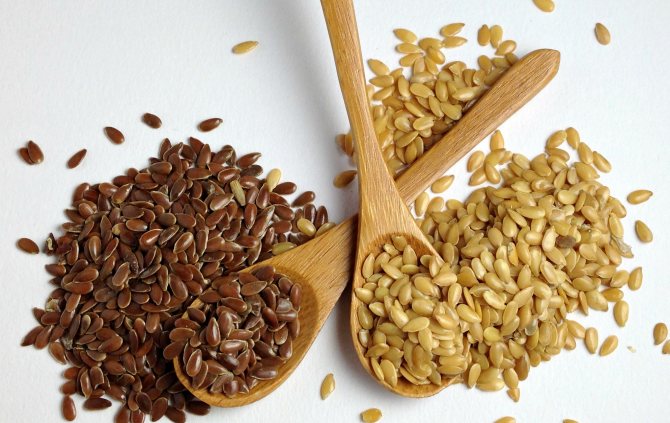
- Flax is widely used in folk medicine. Flax seeds are of particular value. Hippocrates himself recommended the use of flax seed infusion for inflammatory processes.
- If flax seed is soaked in water, a peculiar consistency is obtained, reminiscent of mucus. This remedy can have a mild laxative, analgesic, anti-inflammatory effect.
- The pharmaceutical industry uses flax to make preparations to improve the functioning of the cardiovascular system.Such drugs have shown themselves to be especially effective for the prevention of atherosclerosis.
- Flaxseed infusion has an enveloping effect on the digestive system. Therefore, traditional medicine offers many recipes based on this raw material for people suffering from gastritis, peptic ulcer disease, and diseases of the esophagus.
- Valuable linseed oil can be successfully applied for external use. With its help, it is advised to treat thermal and chemical burns, as well as radiation damage to the skin.
- Flax oil is a valuable raw material in folk medicine for the fight against cholecystitis. It has an effective diuretic and laxative effect.
- Flax seeds contain a plant analogue of estrogen, a female hormone. Scientists have even identified cases of active eating of flax by animals, due to which they have anomalies of the gonads. Therefore, pregnant women should limit themselves to the use of flaxseed oil or seeds.
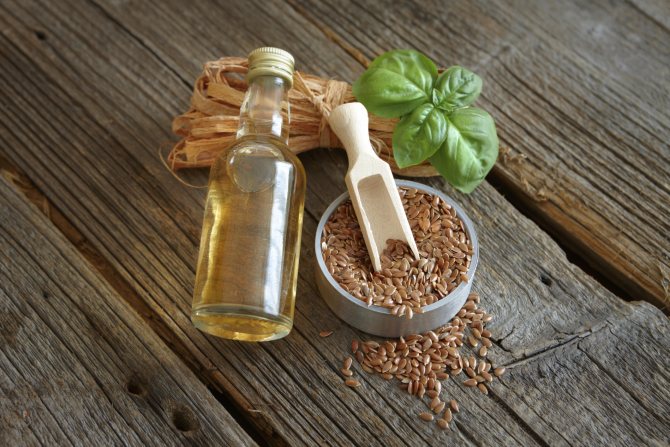

- Scientists from Canada have identified a link between breast cancer and flax seeds. It turned out that the daily use of seeds by breast cancer patients helped to curb tumor growth.
- Flaxseed oil is a valuable source of Omega-3s.
- Flax seeds are known for their miraculous effects on the body during weight loss. They help remove waste and toxins.
- Flax is also widely used in cosmetology. It has a positive effect on skin, hair and nails.
- It is useful for women to take flax during menopause, because it helps to normalize hormonal levels.
- Flax is also used in cooking. Flaxseed flour is prepared from it, flax seeds are added when preparing dishes, and baked goods are made.
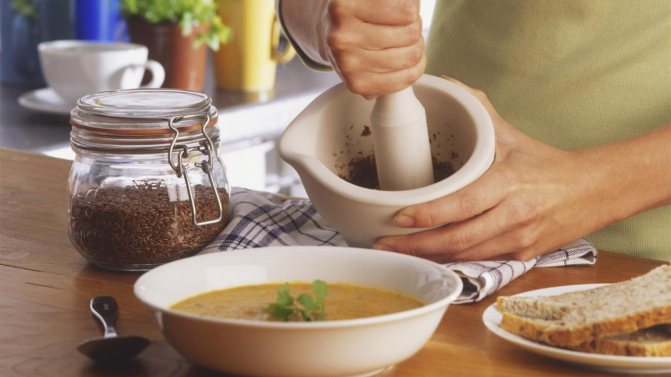

Large-flowered


Large-flowered flax is an annual plant with a straight, bare stem, branched in the upper part. Height up to 60 cm. Leaves are sessile, sharp, oval in shape. Large-flowered flax has scarlet flowers with a diameter of 3 cm, which are located in loose corymbose inflorescences. After flowering, fruits appear - dry boxes with flat seeds. The homeland of this species is Northwest Africa.
Flax is perennial. Description
- Perennial flax belongs to the flax genus and to the Flax family.
- Perennial flax is widespread in Western Siberia, Great Britain, Austria, Belarus, Germany, Bulgaria, Czechoslovakia, Italy, Spain.
- Perennial flax is found in the wild in the steppes and on meadow slopes.
- Perennial flax is a herb that has a vertical or slightly beveled woody root.
- Perennial flax shoots can reach 80 cm in height. They grow upward, but can be bent at the base and grow obliquely.
- Perennial flax leaves can reach 5 cm in length and 3 mm in width. They are green in color, pointed in shape with small denticles along the edges.
- Perennial flax flowers can be blue or white. Also, the flowers of this plant are quite small - 2-3 cm in diameter. They are located on straight pedicels.
- The active flowering time for perennial flax begins in July and ends in August.
- The fruit of perennial flax is a box with seeds up to 7 mm long.
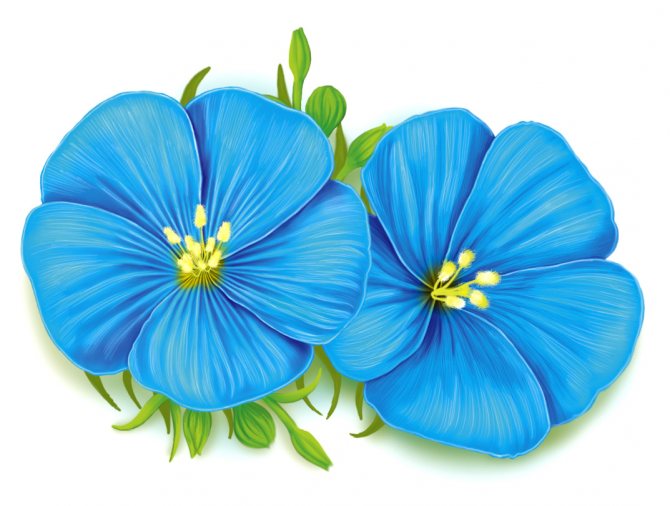

Red


Red flax is an annual, its stems are graceful, straight. It reaches a height of half a meter. The leaves of the plant are elongated. The flowers are scarlet, up to 4 cm in diameter. Five petals are shaped like saucers. It blooms for only one day, falling in the evening, but the next day new flowers bloom to replace it. They are similar to wild poppies in their attractiveness. Flax strikes with an abundance of bright colors, especially if the representatives of the species are planted in a large group.
Flax is perennial. Photo
Linen looks spectacular both in single plantings and in group ones. Combine this plant with any summer flowering plants to create a vibrant floral arrangement in your area. Flax is often planted in ridges, rock gardens.Also, this plant is great for cutting. The bouquets are summer and romantic. To collect such a bouquet, you need to pull out flax at the bud stage, and then cut off the roots and immediately put them in water.
All the decorative characteristics of perennial flax are effectively revealed in combination with marigolds, cornflowers, daisies, clover. The plant is often chosen for Moorish lawns.
Application in landscape design


Landscaping masters have long and successfully used several types of flax in their work: perennial flax, fiber flax, large-flowered flax, yellow flax, decorative flax and many others. In the home garden, flax looks elegant and cozy, with group plantings of flax they decorate the borders. New Zealand flax growing near garden paths or stairs will give the garden a festive look and is ideal for creating a tropical or Spanish garden.
For fans of wildflowers bouquets: linen placed in a vase is an amazing addition to the interior, capable of pleasing the eye for up to five days. Unlike other flowers, flax is not cut off to make a bouquet, but dug out from the roots. In the budding stage, they are placed in water, and soon they open. The best neighbors for flax will be wildflowers: daisies, poppies, bells.
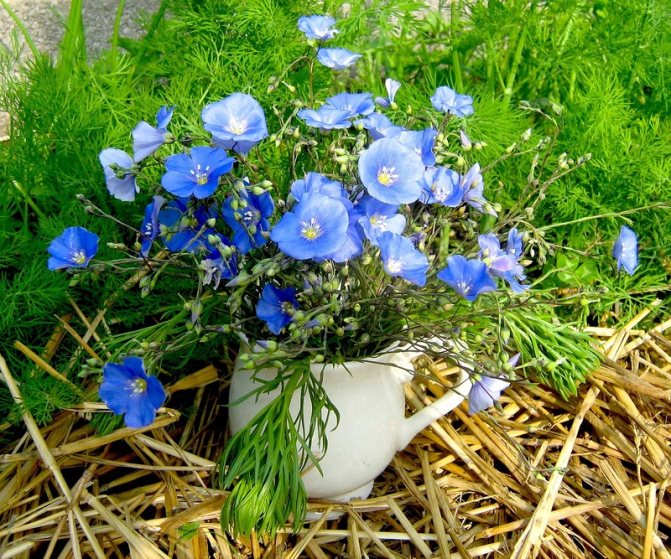

Every flora lover dreams of his own garden, where you can escape from the city noise and dust, where you can lovingly cultivate every plant with your own hands, waiting with trepidation for the fruits of your labor. Florists dream of creating their own corner of nature according to their taste, where everything will meet the desires and needs. If you want to see something completely new, different, unusual on your site, we recommend planting flax.
Perennial flax types
Among gardeners, not only annual, but also perennial varieties of flax are popular. Let's take a look at some of them:
- coarse flax is a herbaceous plant of the Flax family, which can reach 40 cm in height. Freely grows in Russia, Ukraine, Asia Minor, Europe. The active flowering period begins in early summer. The plant has light blue or light lilac flowers. In natural nature, coarse-haired flax prefers to grow in meadows, in steppes, on rocky slopes;
- Austrian flax. The plant can grow up to 50 cm in height. The root system is represented by the main root, which can branch slightly. The active flowering period begins in late spring and ends in June. Austrian flax blooms with beautiful blue flowers, which are collected in small inflorescences;
- flax tavrichesky. This type of perennial flax has a characteristic feature - spectacular yellow inflorescences. One inflorescence consists of 10-20 flowers, each of which is up to 3 cm in diameter;
- Yellow flax is a perennial herb that belongs to the Flax family. Grows up to 50 cm in height. Widely distributed in Europe, Asia Minor. Prefers dry, calcareous soils. Bright yellow flowers appear in June or July;
- flax is thin-leaved. This type of flax is capable of reaching 50 cm in height. The plant grows in a compact bush with a lignified base. Flowering occurs around mid-June and lasts until mid-July. Flowers can be white, lilac, or pinkish;
- perennial flax, or Siberian, grows up to 50 cm in height. Flowers are small, up to 2 cm in diameter, have a delicate blue tint. There are also additional varieties of perennial flax: perennial branched flax and perennial alpine flax.
What other plants for the "lazy" can you plant in the garden?
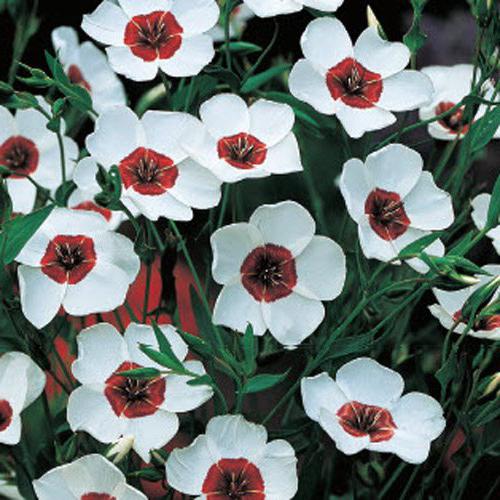

There is not always time to take care of the garden and flower beds, but everyone wants to have their own fragrant corner on the site. Someone will say that this does not happen, and any plant requires attention.Of course, this is so, but the degree of care and its thoroughness differ. If you rarely visit the country, then not only large-flowered flax will suit you. Growing from seeds of some other species will also come in handy. Pay attention to the openwork gypsophila. A perennial plant will cover the ground with an even carpet. You can also use an annual analogue - graceful gypsophila, it grows quickly and blooms luxuriantly.
Our traditional cornflower is simple and charming at the same time. Now many varieties have been bred, not only with blue color, but also white, pink, purple. In addition, the plant will delight you with a double wave of flowering - June and September.
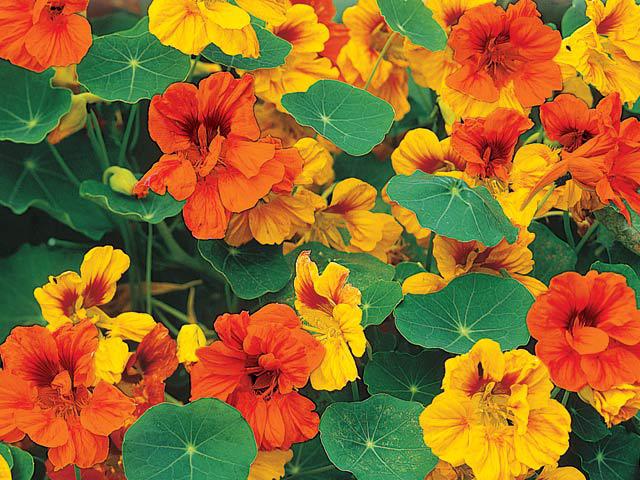

We recommend choosing for the site fragrant Iberis or Matthiola, toadflax, alissum, braiding everything with an even cloth, calendula (not only pleasant, but also useful), nasturtium for both horizontal and vertical gardening, morning glory.
If you need an easy-to-care, but spectacular and unusual plant, look at the bright and cheerful large-flowered flax. Growing from seeds at home will help you get high-quality seedlings and plants that are strong by the time they are planted in the ground.
Perennial flax varieties
Among the popular varieties of perennial flax, the seeds of which you can easily buy in the store, you can list the following.
Flax perennial "Heavenly"
During active flowering, this plant is compared to sky blue. Small flowers of a spectacular blue color adorn the lignified shoots. The plant grows in a compact bush that can grow up to 50 cm in height. The undoubted advantages of this variety, for which most gardeners choose it, are excellent winter-hardy qualities and high resistance to diseases and pests. When grown by seed, flowering occurs only in the second year.
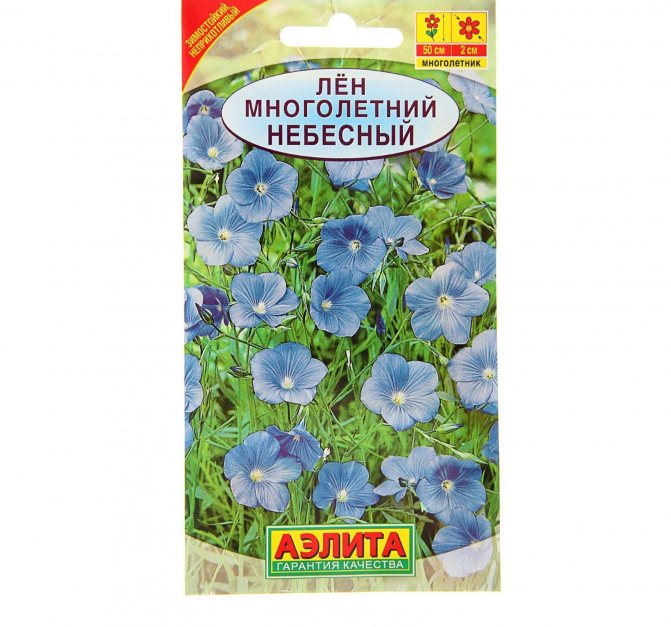

Flax perennial "Sunny Bunny"
This variety compares favorably with its counterparts. Flax grows as a beautiful bush up to 20 cm in height. Thin and numerous shoots are crowned with yellow flowers. The plant prefers to grow on loose and dry soils, in sunny places. With the seed method of reproduction, flowering occurs only in the second year. The advantage of the variety is the long flowering period - from June to September. "Sun bunnies" will delight you all summer.
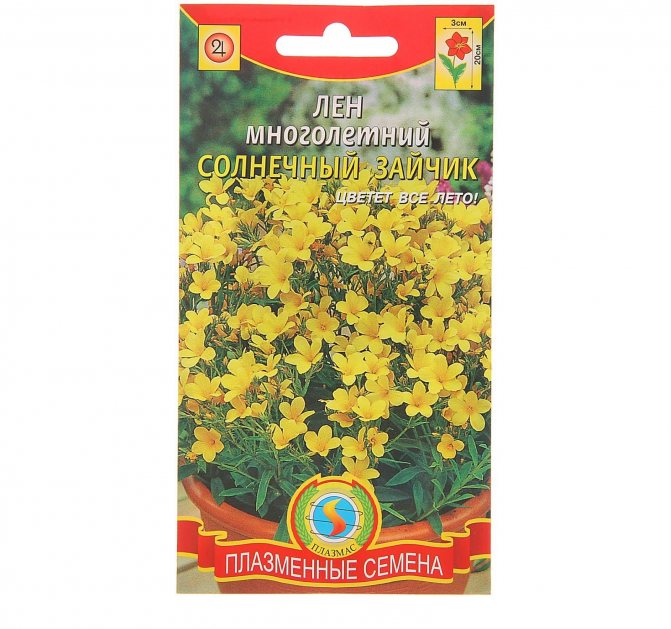

Flax perennial "Diamond"
An unpretentious perennial that will adequately decorate your site in solo plantings or in combination with decorative herbaceous plants, flowering summer plants. Reaches 35 cm in height. Snow-white flowers appear in June-July. Shoots are thin and resilient. The plant prefers to grow on light soils in well-lit areas. By growing these plants by seed, flowering can be seen in the second year.
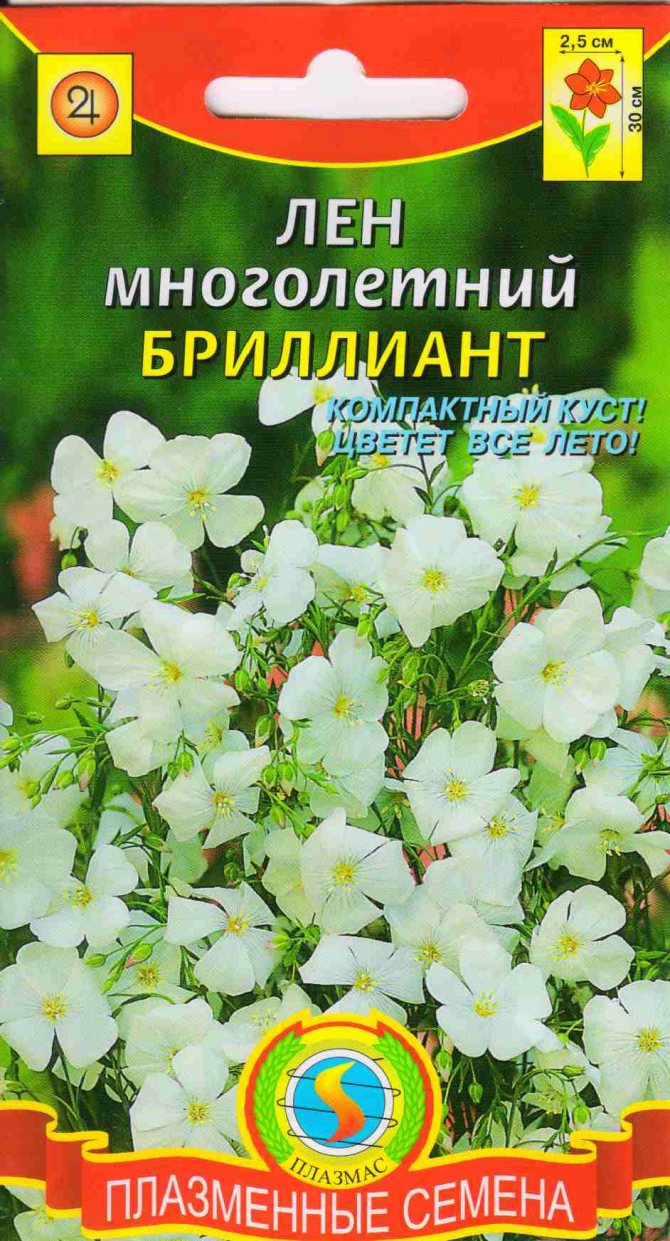

Perennial flax "Blue Carpet"
The name of this variety speaks for itself. Perennial in the period of its active flowering looks extraordinary. Numerous blue flowers grow in a dense carpet. They look spectacular both in single landings and in group ones. Grows up to 50 cm in height. Flowers reach 2-3 cm in diameter.
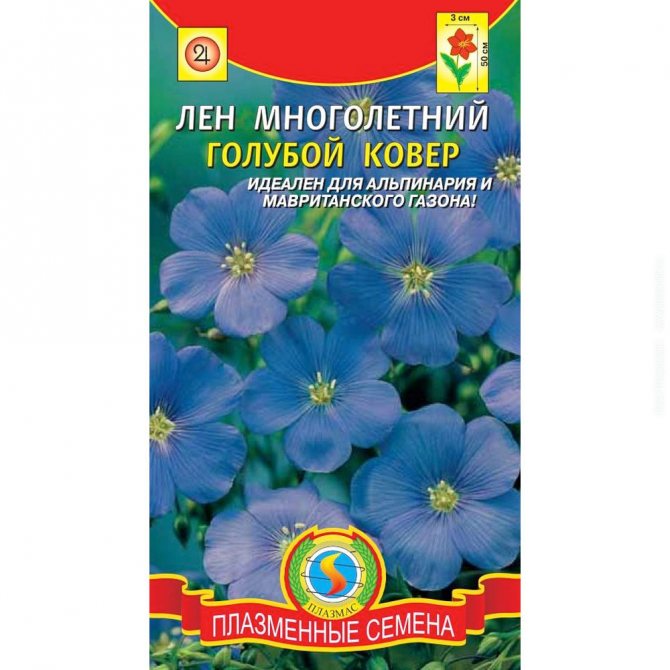

Sky blue


Heavenly azure flax is a perennial unpretentious plant up to 80 cm high. It is planted in a group shaped like a cloud. If a plant has been growing in one place for many years, it becomes like a rug, although it is not climbing. It is a herbaceous plant with pale blue shades of flowers that are located on the side shoots. Several dozen flowers bloom on one plant, which open mainly in sunny weather.
Flax is perennial. Landing
Step 1. Choosing a place for planting perennial flax
If your plot is very sunny, then perennial flax is ideal for growing.The fact is that flax is a plant that simply cannot grow and develop normally without sufficient sunlight. He does not need to create any additional shelters from the sun, look for a place for him in the shade of a gazebo, etc.
Step 2. Choosing the soil for planting perennial flax
Flax decorative perennial unpretentious in cultivation. The plant can grow in almost any soil. If you want flax to reveal its decorative qualities to the maximum, then take into account its preferences:
- perennial flax prefers to grow on light and airy soils;
- avoid planting perennial flax in wetlands;
- if the groundwater in your area is too close to the surface, then perennial flax may react negatively to this. Try to make a good drainage layer and plant the plant in the most elevated areas.
Step 3. Choosing the time for planting perennial flax
If you have decided on the type of flax for planting, found a suitable place and prepared the soil, then now you need to decide on the planting time. Perennial flax can be planted in open ground both in spring and autumn. But the air temperature should be high enough - about 15-20 degrees. Some gardeners prefer to plant flax indoors. If your area is characterized by a rather warm spring and late autumn, then it is quite possible to plant the plant immediately in open ground.
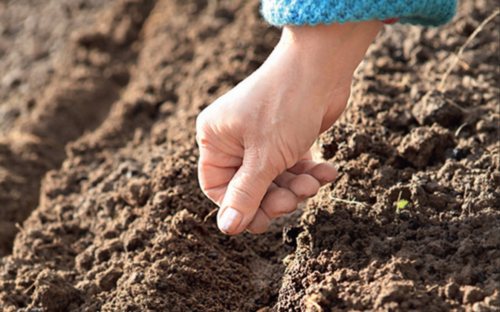

Step 4. Technology of planting perennial flax
- Prepare the soil before planting flax. Dig up the entire area well.
- Add up to 4 kg of humus or compost per 1 sq. m. It also does not hurt to add 1 tablespoon of superphosphate and potassium sulfate.
- Level the area and make seed furrows up to 1 cm deep. Sow the seeds.
- No need to bury the seeds. Sprinkle with a thin layer of soil and spray with water from a spray bottle.
- Under favorable temperature conditions, you will already see the first shoots in 14 days.
- After the seedlings reach a height of 4-5 cm, they must be thinned so that the minimum distance between the plants is about 20 cm.
Ordinary or sowing
The genus of flax includes more than a hundred species, of which the most important is common or sown flax. This is an annual grass, practically without hairs, about 60 cm high, and even higher in warm countries. Branches at the top. The leaves are alternate, narrow. The flowers form a false umbrella, the sepals are pointed; petals are ashen-azure, sometimes snow-white, the fruit is spherical, the seeds are shiny. Wild cultivated cultivated flax is unknown. It is believed that, most likely, it originated from narrow-leaved flax, which was cultivated in the Mediterranean in ancient times.


Modern cultural sowing flax is divided into three groups: fiber flax, curly flax and flax-flax. All of them are annual plants, differ in size and purpose. Fiber flax is grown for fiber, curly flax as an oil plant, flax-flax is used for both purposes. In fiber flax, the stems are erect, up to 60 cm high, in curls - up to 30 cm, sometimes creeping. Fiber flax leaves are sessile, the lower ones are opposite, the upper ones are alternate, linear, with solid edges. Near the base of the leaves, instead of stipules, glands are located. The flowers are predominantly aquamarine, sometimes white, less often pearlescent, five-petal, collected in branchy thyroid inflorescences. The fruit is an ovoid spherical capsule with 6-10 seeds. Seeds are shiny, smooth, flattened, light brown, without endosperm. The plant blooms in June-July, the seeds ripen in August-September.
Flax is perennial. Care
Watering perennial flax
Despite the fact that flax loves rather dry and light soils, periodic watering is simply necessary for it. Remember that after watering, the soil around the plant should not turn into a “mini-swamp”. Practice in moderation.Depending on climatic conditions, watering may be needed from 1 to 2 times a week. Thus, the main rules for watering perennial flax are:
- Water perennial flax 1-2 times a week;
- monitor the moisture content of the soil;
- do not allow waterlogging, because the plant does not like this;
- with the arrival of autumn, reduce watering, gradually removing it completely;
- try not to water the plant with too cold water or tap water. It is better to have a large container of water for watering the plants, in which rainwater will be collected or tap water will settle.
Weed perennial flax
Like any ornamental plant on the site, perennial flax needs regular weeding. First, it will create a neat and healthy look for your planting. Second, by regularly removing weeds, you protect your plants from pests and diseases that can be carried by weeds.
We feed perennial flax
Novice gardeners can breathe a sigh of relief, since perennial flax is a plant that does not need regular feeding. If, when planting a plant, you added compost or humus to the soil, as well as superphosphate and potassium sulfate, then flax will feel great throughout the season and without additional dressing. However, if you really want to "pamper" the plant during the flowering period, you can apply any liquid fertilizer several times after watering. Flax will gratefully respond to all your efforts.
Protecting perennial flax from diseases and pests
If you do not grow flax on an industrial scale, then you will not have to think about protecting the plant from diseases and pests. Almost all varieties of perennial flax are highly resistant to various adverse conditions, including pests and diseases. Observe the minimum requirements of the plant for the characteristics of the soil, and flax will not overtake the disease. Among pests, the most dangerous representative is the flax flea.
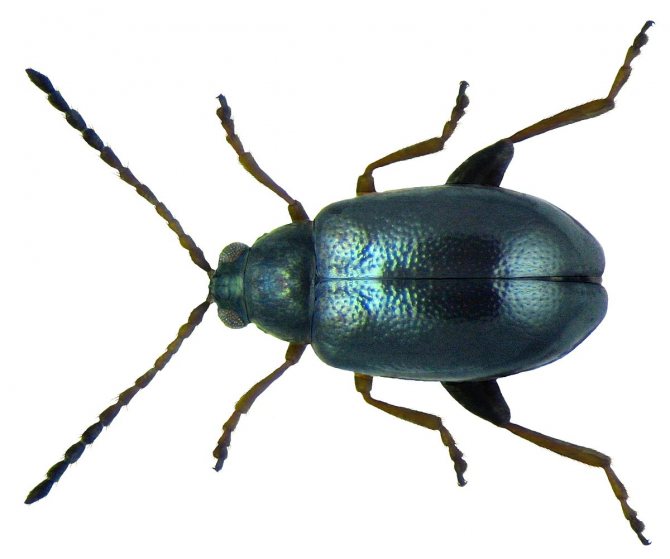

Regularly inspect your perennial flax plantings in order to notice this dangerous pest in time. If this happens, then the plantings should rather be treated with a special insecticidal agent, which can be purchased at any gardening store.
Plant care: basic rules
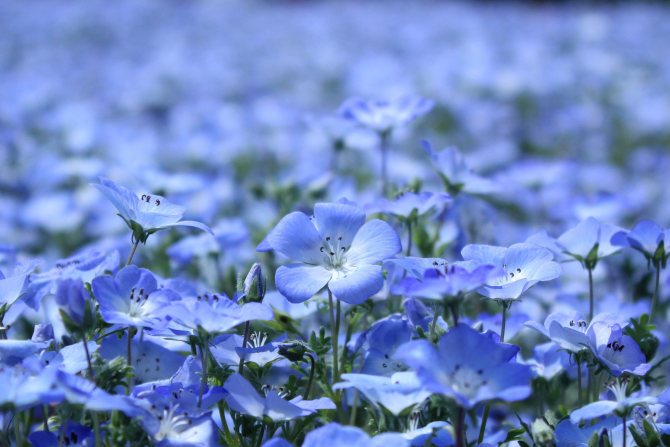

If you reasonably organize all the stages of work on the care of flax, they will not be so difficult and tedious. The main thing is to create all the conditions for the plant to grow successfully, to provide appropriate care and attention, and the results will exceed the wildest expectations. Most of the garden plots come across problem types of soils that need regular agronomic measures to improve.
Soils containing a lot of sand warm up quickly. Due to their granular structure, they have excellent ventilation, water permeability, which ensures high-quality respiration of plants. But sandy soils contain scarce nutrients. It is extremely important not to forget about proper soil fertilization. Sandy soils almost do not retain water; due to their granular structure, they dry out quickly. Therefore, the pores formed between the sand particles must be filled.
The introduction of compost mixed with mulching materials (for example, clipped lawn grass or other organic waste from the garden area), mineral fertilizers, and drill meal can significantly improve the structure of the soil. Clay soils retain moisture well, preventing it from quickly passing through the soil layers or eroding. Also, clay soils have a sufficient amount of mineral and nutrients that are poorly washed out of the soil. Weaknesses of clay soils: poor natural ventilation and water permeability, as the soil contains few hollow spaces that can be filled with water or air.Clay soils do not warm up well, they can easily become compacted, which hinders the circulation of water and air, therefore, stagnant waterlogging of the soil often occurs, which subsequently causes rotting of plants.
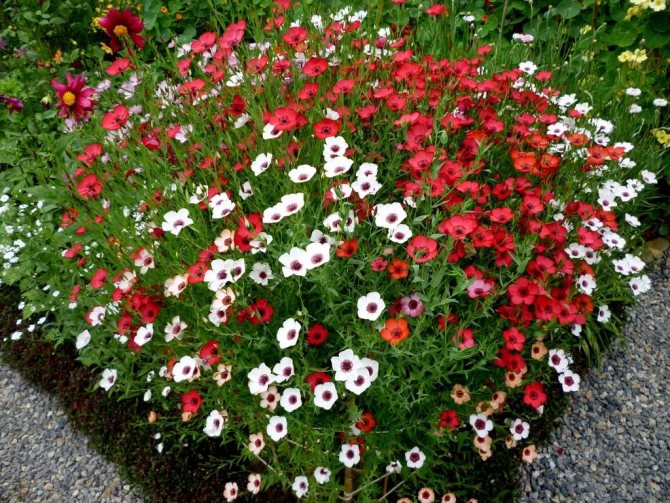

The most important measure to improve the quality of clay soils is to give them a looser lumpy structure by adding sand, compost, and mineral fertilizers. Loamy soil is ideal for growing garden plants. Loamy soil has a porous loose structure, which ensures its high thermal conductivity, water permeability, natural ventilation. It is rich in nutrients and minerals, which dissolve in water and easily go to plants. Flax grows well on moist, loose, loamy soils of medium density. It grows worse on sandy soils. Heavy clay and acidic soils are not suitable for growing flax.
Flax representatives are unpretentious, tolerate frost stubbornly, and are quite resistant to diseases and pests. They can be safely grown in areas with harsh winters. Thanks to this property, Russian flax is a traditional export product.
Flax is sown in spring, in April. Sowing depth up to 3 cm, soil temperature + 7 ° С. Lowering the temperature will not harm the seeds, they are able to germinate at a temperature of + 2 ° C. The site for future planting is prepared in advance, humus is introduced. If sowing is done in early spring, then the seeds use the maximum amount of soil moisture, the plants are less affected by diseases. Stagnant moisture is harmful to the plant, therefore drainage is necessary. The landing site is protected from strong winds.
Water the plant regularly, in moderation, the ground should always be moist. If you are not sure about the degree of soil moisture, then you should plow the soil a little in the irrigated areas. Experience shows that watering should be limited in spring. Plants are best watered early in the morning so they can dry out in the evening. Plants that are forced to stand wet at night for a long time are more susceptible to fungal diseases.
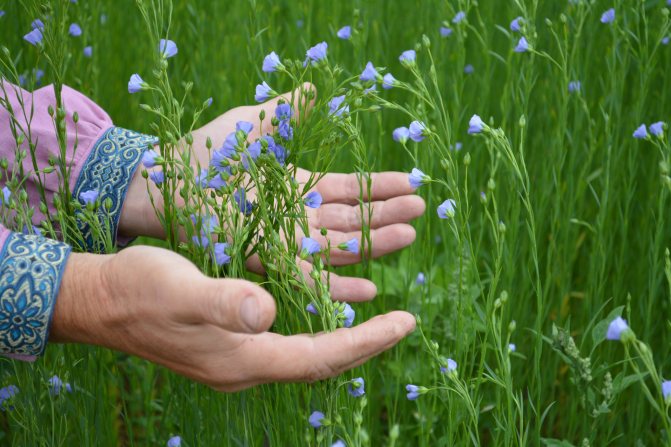

Rainwater is often used for irrigation. Rainwater is softer than water from the mains; when it stands, it heats up, becoming ideal for irrigation. To reduce the amount of harmful substances and dirt in rainwater, it should be collected in the drums intended for this, after cleaning the roof (this is especially important after a long dry period). Dirt and dust are removed, which greatly reduces the risk of water bloom. It is best to cover the barrels with something, because along with dirt and wind-blown foliage, larvae of various midges willingly settle in a barrel with rainwater, which can subsequently cause great harm.
In summer, the plant is watered every three days, the frequency of watering depends on the degree of aridity. In autumn, watering is canceled, the plant is allowed time to dry, after which the dry shoots are cut off. The culture is fed with complex mineral or organic fertilizers up to 3 times per season, by introducing them into the soil or by spraying. In winter, the curtain is covered with a layer of humus or compost.
To prevent thickening of the plantings, dry flower stalks are cut off, since flax is prone to self-sowing. Timely collection of dry wilted flowers accelerates plant renewal, prolongs the flowering period, makes it more luxurious and beautiful. Flax also needs regular weeding, the plant has a deep enough straight root, so you can not be afraid of touching it.
When the flax seeds are almost ripe, the plants are watered with special preparations. After half of the boxes turn brown, they are cut off, then dried. After seven days, when the bolls rustle with seeds when shaken, they can be threshed.A small number of boxes are kneaded by hand, if there is a lot of raw materials, they are wrapped in a tarpaulin and threshed by tapping with a stick. Wet seeds are dried in a ventilated room, excluding direct sunlight. After this procedure, the seeds are collected, scattered in the wind. The flowering of flax depends on the length of daylight hours: the longer the day, the sooner the flax will bloom. Too hot weather will reduce fiber and seed yields. At the same time, a small amount of light will cause a large number of small bolls with a tiny number of seeds to appear. Flax has a period of sensitivity to a decrease in light intensity. This is the time when pollen begins to form in the flowers of the inflorescence.
How does flax grow?
Flax does not differ in high demands on growing conditions, which greatly facilitates the choice of a suitable place for planting it. However, in order for it to grow and develop within normal limits, it is necessary to prepare an open sunny area for planting it, on which no shadow should fall either from shrubs with trees or from various buildings.
Flax prefers to grow on moist loamy soils of medium density. The soil should be loose and allow water to pass through. Some time after planting, the plant begins to attract views, surprising with how flax grows: cornflower-blue, scarlet, mother-of-pearl flowers light up in different corners of the garden. Thanks to the varied color palette of this plant, the backyard plot takes on a bright and original look, encouraging flower growers to plant flax on alpine slides, flower beds, flower beds.
Where does flax grow?
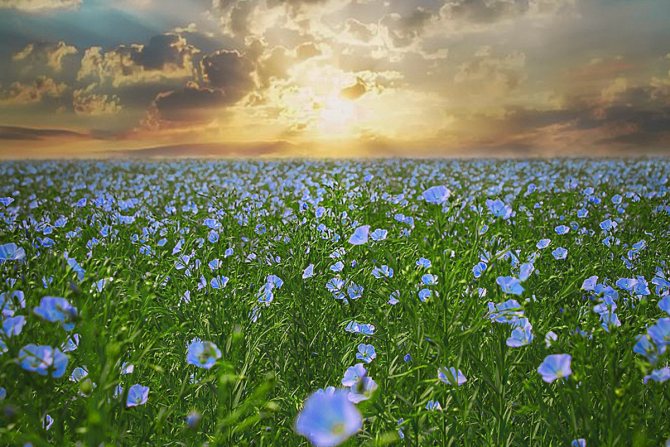

Plant growth is determined by various factors: temperature, light, precipitation, such harmful factors as acid rain, toxic substances. Of great importance for the normal growth of plants is the composition of the soil, providing it with nutrients. The composition of the soil is determined by mineral components such as sand, clay, as well as water and oxygen supplied to the roots.
To successfully grow your crop, you need to understand where flax grows best. Those who are focused on growing flax in their garden should take into account that this culture has a sufficiently developed root system, so it needs to be planted in a separate spacious area. As a preventive measure, to maintain the culture in a healthy state, the alternation and observance of crop rotation of the plant throughout the year, as well as the choice of varieties, are of great importance.
Inquisitive flora aficionados know that flax should not be planted in a place where corn or other flax was its predecessor - this reduces the yield indicator. It is better if melons or winter crops were planted earlier.
How perennial flax reproduces
We propagate perennial flax by seed method
Seed propagation of perennial flax is popular among gardeners. The plant willingly sprouts, the seeds do not require any preparatory work before planting, and you can buy them in almost every gardening store.
- Perennial flax seeds can be propagated in spring, autumn and even summer. Just keep in mind that plants will bloom only in the second year of life.
- When planting, the seeds are not buried in the soil, but simply scattered over it and slightly moistened.
- Seeds can be planted not only in open ground. You can plant flax in containers, but not for the purpose of growing seedlings. The plant transplant process is ineffective. The container will become a permanent growth site for flax. Under suitable temperature conditions, it is simply taken out into the street.
The purchase of seeds is also an important point. Buy them in specialized stores and be sure to pay attention to the expiration date. Expired planting material may simply not germinate. Carefully read all the information on the packaging about the selected variety.
We propagate perennial flax by dividing the bush
The method of propagation of perennial flax by dividing the bush is relevant for plant owners who are more than two years old. An adult bush should be divided in mid-spring or after flowering ends in August.
- Dig up the bush carefully, being careful not to damage the root system.
- Divide the bush into as many pieces as the size of the plant allows.
- Plant each part of the shrub in a different location.
- Maintain a minimum distance of 20 cm between plants.
- Only monitor the moisture content of the planted plants. They also need to be slightly shaded from direct sunlight at first.
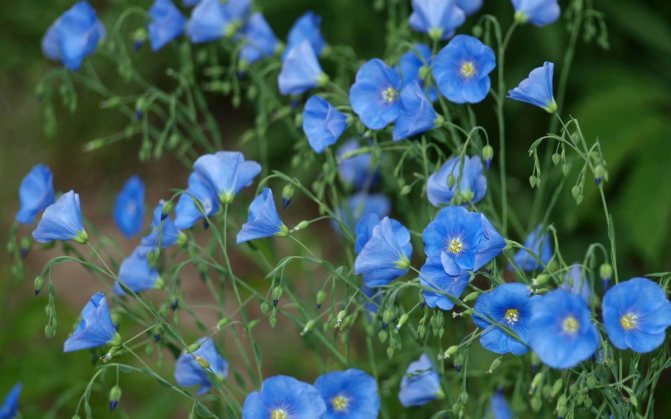

If you do not know what to plant in your too sunny area, then plant flax - a perennial flower. This ancient plant will create a piece of natural nature in your flower garden. Perennial flax in cultivation is absolutely uncomplicated. Planting a plant is simple, and care is minimized - to occasional watering and weeding.
Diseases and pests
The main pests that annoy the culture: flax trips, butterflies, flax fleas. To combat them, special drugs are used. It is almost impossible to completely abandon the use of chemicals in the garden, in this regard, there are certain criteria. Means permitted for use:
- should not be poisonous;
- should not pose a danger to bees;
- should not be used in protected water areas;
- must have a shelf life of no more than 21 days.
It is necessary to use chemical means of protection only if there is a threat of pest infestation. All instructions for use must be followed. Before using chemicals, they accurately determine the disease or pest. It should be noted that many gardeners and owners of small garden plots have already limited or even completely abandoned chemical remedies.
To reduce the occurrence of serious diseases, it is necessary to follow the basic agronomic rules:
- flax is grown on one site no more than once every 7 years;
- tested seeds are used for sowing;
- fertilize the soil in accordance with the recommendations;
- use selected varieties of flax that are resistant to diseases.
If an excess of nitrogen is formed in the soil, then the resistance to diseases decreases. Lack of potassium worsens the quality of fibers, increases the development of diseases in plants. A sufficient content of zinc, boron, copper, manganese in the soil helps to fight diseases.
Are seeds harmful?
Flax seeds are believed to be harmless. But at the same time, the sale of flaxseed oil is prohibited in many countries.
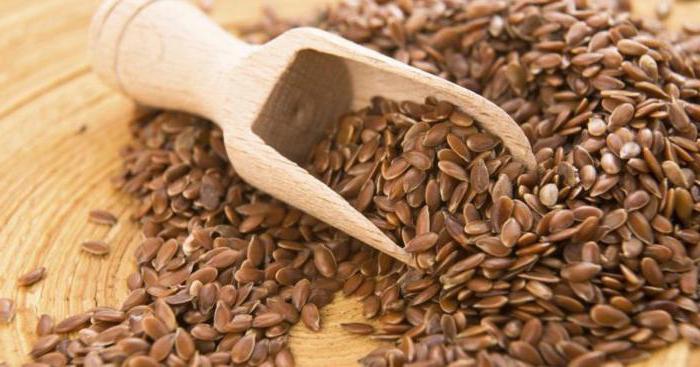

It is the leader in the content of Omega-3 acids. These fatty acids are extremely useful for the human body, because they fight atherosclerosis, lower cholesterol levels, are a building material for cell membranes, and are also very necessary for the synthesis of prostaglandins. However, under the influence of solar heat and light, acids are rapidly oxidized. At this moment, peroxides are formed, which, on the contrary, are extremely harmful to humans, having a carcinogenic effect.
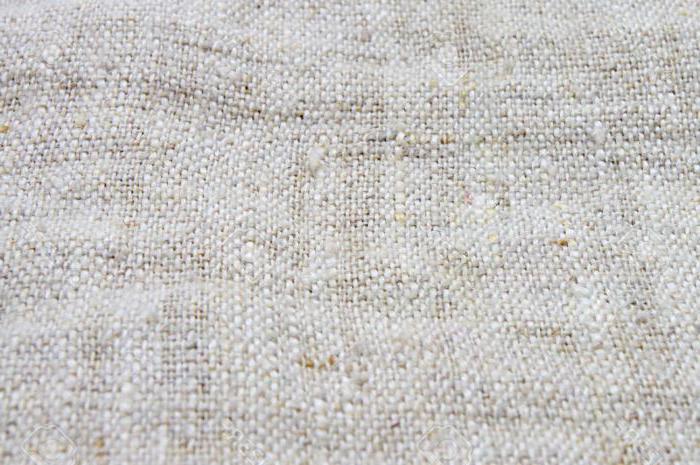

It is necessary to store the oil in a cool place, and transport it in opaque containers. Seeds last much longer than oil. Indeed, they contain fatty acids under a protective membrane. Nevertheless, before using them, you need to check their taste.
Sometimes you can find flaxseed flour on sale. It is ground seeds. Of course, it already does not contain the necessary fatty acids, but it does not deteriorate if stored improperly. However, it is already devoid of most of the beneficial properties, but products made from it still have a beneficial effect on the body thanks to fiber, which remarkably helps with intestinal disorders.
Plant species. Their description
More than 200 plant species are known, only about 40 of its species grow here. The most common is common flax, which is subdivided into:
- fiber flax;
- flax-curly;
- Len mezheumok;
- creeping linen.
Fiber flax is characterized by a stem elongated about a meter with a little branching top. Up to three boxes filled with seeds are formed on it. The foliage is elongated. Flowering occurs with delicate blue inflorescences in the form of an umbrella-shaped brush. The seed pod is divided into five sections in which the seeds are placed. In one box there are up to 10 seeds of an ovoid flattened shape. They are brown in color. This subspecies is used for fiber production.
To get more seeds, curly flax is grown. It has dense branching of stems, each of which has up to 80 seed pods. They contain larger seeds when compared with fiber flax. It grows in height up to 70 centimeters. This subspecies is used for the production of oil, as it contains up to 47% fat.
Flax-mezheumok is also grown for oil production. Outwardly, it has a lot in common with curly flax.
Creeping flax is much less common. It is more of a wild-growing subspecies that grows in steppes and valleys, individual populations can be found in valleys and hilly areas. This subspecies is characterized by leafiness of stems and small blue inflorescences. Seeds are smaller, brown in color. They contain up to 32% oil. Due to the different ripening times of the seed pods, its collection is difficult, therefore, creeping flax is not so popular. Its main value will be frost resistance. This quality is used when crossing it with other subspecies.
In summer cottages, decorative flax with large flowers is especially popular. Its color scheme is very rich. Decorative linen is low, up to 60 centimeters in height. Flowering occurs from early summer to mid-autumn. The flower buds are large, do not fade within 2-3 days. This species can grow up to five years in the same place. Moreover, its decorative effect will not be lost. After a while, with noticeable changes in appearance, it is transplanted to another place.
Flaxseed for hair
Probably many are aware that flaxseed for hair can also be very useful. Our hostesses love to prepare various masks and gels from it. Therefore, below I want to give you some good recipes.
Hair mask recipe
We take 1 tsp. seed, pour 200 ml. boiling water and stir until jelly is formed. After that, cover the composition with a lid and leave to infuse for 30 minutes.
Next, filter the resulting broth and add 2 drops of bay oil to enhance hair growth. And if you have dry and damaged hair ends, be sure to add coconut or shea butter.
Apply the broth both to the hair roots and distribute over their entire length. Then you put a film on your head and wrap your head in a towel.
It takes 2.5 - 3 hours to be in this state. After that I wash my hair with shampoo. Hair will have a beautiful shine and healthier appearance.
Hair spray
We take 1 tsp. seed of the plant, pour 200 ml of hot water and bring to a boil. After the broth must be thoroughly mixed and left to infuse overnight.
In the morning, strain the broth and add 2 tsp. lemon. If you have broccoli oil, it’s a good idea to add that too. This will give the hair good volume.
After that, pour the resulting solution into a spray bottle and refrigerate. When you need hairspray, take out this spray, spray it on your hair, and wrap it in the usual way.
Hair gel
We take 4 tsp. seeds, add 200 ml there. hot water, bring the solution to a boil and leave overnight. In the morning, the thickened jelly must be filtered from the seeds. Then add 1 tsp there. lemon. The end result is a nice gel that will hold your style.
Flax seed growing
Choosing a place and soil for planting flax
Like the basic species of the genus, decorative flax is a sun-loving plant.Sowing and planting flax is possible only in well-lit areas, avoiding even the slightest partial shade. It is better to avoid too windy locations, but this plant is not afraid of drafts. So feel free to assign open areas to him. When choosing a place for flax in your garden, it is better to take into account its self-seeding, and the fact that the larger the flax is planted, the more attractive it will look. Most often, a separate area or flower garden is allocated for flax, which is sown annually with various types of decorative flax. You can take one of the curbs by the path under this culture.
Soil for flax is also very easy to pick up. The main thing is that it is well-drained and at least a little calcareous. All other parameters, including nutritional value, are not important for decorative flax.
Decorative flax allows only one planting technique - sowing in open ground. In this case, flax is always placed in groups or spots, allotting for it whole areas or individual sections of flower beds. It cannot be planted through seedlings, because the plants have very fragile roots. And the short growing season of flax does not complicate the process.
When and how to plant flax outdoors.
Sowing of decorative flax in the Urals is carried out at the end of April. The seeds are not afraid of cold, so there is no point in waiting for May and stable heat. The sooner you plant flax, the sooner it will bloom. In order to stretch the flowering of flax in the garden and admire its lovely flowers literally from the beginning of May to mid-autumn or even cold weather, you can adjust the sowing time and sow flax in 2-4 visits with intervals of several weeks. The last crops can be carried out until the third decade of May.
Flax is sown in rows with a distance of about 20 cm between rows. During sowing, seeds are sprinkled rarely, at a distance of about 5 cm between plants, or more often, but with subsequent thinning. A great alternative to straight seeding is random seeding, which allows for a denser, more dense planting. Since flax usually sprouts very amicably, there is no need to thicken the crops too much. Before planting, the soil must be improved, compost or other organic fertilizers must be added to the soil. Perennial flax can be sown according to the same principle in late autumn, before winter.
Young flax seedlings are sensitive and fragile. They can suffer from cold or wind, so prepare a shelter and protect the plantings in case of the vagaries of the weather. Once the seedlings are strong, the plants will be immune to adverse conditions.
Flax for type 1 and type 2 diabetes
Antioxidants are known to reduce inflammation, insulin resistance, and prevent the progression of diabetes. In addition, research shows that foods rich in omega-3 fatty acids improve insulin sensitivity and lower glycemia.
As for flaxseeds, they are by far the best source of lignans, an active substance with an antioxidant effect, as well as linolenic acid (an essential fatty acid).
In general, the components of flax seeds have antioxidant, hypolipidemic and hypoglycemic effects that are necessary in the treatment of diabetes. Research has shown that they can reduce the incidence of type 1 diabetes and delay the development of type 2 diabetes.
It should be noted that the high fiber content of the seeds also aids digestion and promotes proper absorption of fats and sugars, according to the researchers.
Therefore, if you have high sugar levels, include them in your diet regularly. Every day in the morning on an empty stomach, take one tablespoon of ground seeds with a glass of warm water.
Sowing seeds in the ground
This method also has a right to exist and is simple.You can sow seeds in early spring (April-May) or late autumn, which is called before winter. Prepare the soil in advance, in the manner already mentioned above. Then make neat grooves at a distance of 10-15 cm, 4-5 cm deep. Pour them thoroughly with water. Do not press the seeds, but only spread them in an even layer and sprinkle on top with a small amount of soil. When shoots appear, they must be thinned out, leave a distance of 5-8 cm between the plants.
Recipe for making flax seeds with kefir for weight loss and body cleansing
By the way, flaxseeds are, well, just the perfect choice for those looking to lose weight. A tablespoon of these grains contains only 37 calories, 2 g of dietary fiber, as well as protein, amino acids, B vitamins and minerals such as potassium, magnesium and zinc, which can help you lose weight without harming your health.
In addition, various studies have confirmed that eating them before meals reduces appetite and thus eliminates excess calories.
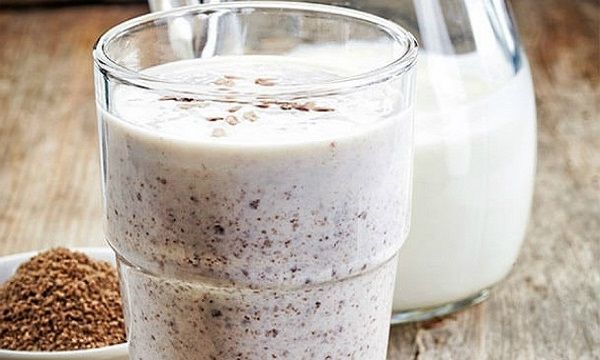

Here is an amazing drink recipe that will help you lose weight and normalize your metabolism. You will need a tablespoon of crushed flax seeds and half a cup of kefir. Soak the seeds in kefir for 30 minutes and you're done! It is recommended to take this drink in the morning on an empty stomach and at night for 3 weeks, and then take a week off. Judging by the reviews, this way you can lose up to 4 kilograms per month.
Another way is to eat a tablespoon of them dry for breakfast every day with plenty of clean water. So in a month you will lose up to 2 kilograms. For the best effect, naturally, you need to eat low-calorie foods and exercise.
Decorative
Landscape architecture uses flax in various combinations with perennials. Good group compositions, borders, flower walls, rock gardens, where the piercing blue of the plant is complemented by the tenderness of a cornflower, the defenselessness of chamomile, interspersed with marigolds or meadow clover.
The trend of landscape fashion develops the theme of wildflowers, and of course flax is the leader among other plants unconditionally.
There are 25 types of decorative perennial flax. Each of them has its own peculiarities of the structure of the flower cup:
- Austrian pink and yellow - good in rockeries;
- alpine, which has some incredible heavenly shade, looks great due to its short stature;
- flowers with red, yellow, blue spots decorate the prefabricated flower bed.
Blue linen looks somehow special, which is why florists and landscape architects love it so much.
We take flax seed for high cholesterol
With high cholesterol, prepare such a remedy. Dissolve 3-4 tablespoons of flaxseeds in boiling water (half a liter). Then cover, wrap well and leave until cool completely. Then strain.
First, take the composition of 1-2 tablespoons 3 times a day 30-40 minutes before meals and over time the dose should be increased to 1/2 cup. The course is 3 weeks.
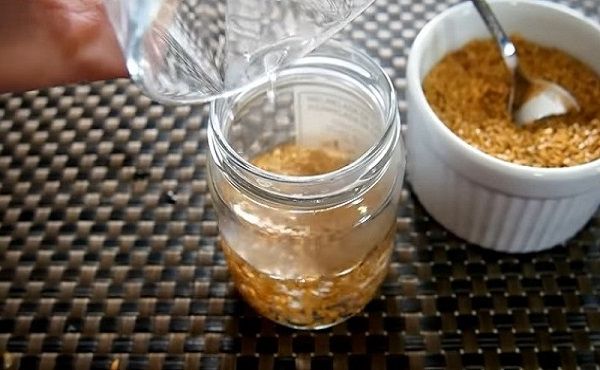

Another treatment for women is to consume pure ground seeds. In this form, they contain a large amount of phytohormones, substances that preserve the youth and health of a woman. It is enough to chew 2 teaspoons of ground seeds before meals and drink water. Perform this procedure three times a day for 3 weeks.
By the way, you can grind them using a coffee grinder, blender, spice grinder or regular rolling pin. In a chopped form, they are also added to ordinary food (for 1 serving of food - 1 tablespoon), for example, in cereals, soups, kefir (yogurt), in various sauces, stews, cutlets, casseroles, homemade cakes - bread, buns, pancakes ...
Flax growing conditions
The plant is demanding on lighting, it puts up only with a light lace shadow. The best areas for decorative flax are open sun areas.Flax planted with clearings attracts the eye with the brightness of flowering.
The plant is not demanding on the soil. The main thing is that the soil is well drained and has an alkaline reaction. Perennial flax prefers light sandy soils filled with humus at a dose of 5 - 7 kg per 1 sq. meter. Heavy clay soils are cultivated by adding sand, wood ash and lime. Annual species grow well on any soil.
Flax care is very simple. Watering plantings is required only in severe drought, usually, the flower has enough natural precipitation.
Weeds will spoil the look of flower meadows, so weeding should be done in a timely manner. To avoid the uncontrolled spread of the flower by self-seeding, you need to collect the seed pods on time. Or take a separate area for flax, away from flower beds and flower beds.
Under unfavorable weather conditions, flax can be affected by fusarium and rust. If, at the first sign of the disease, you do not start treating the plantings with fungicides, there is a risk of losing all plantings.
Side effects
Subject to the dosage, method of preparation and taking into account all contraindications - side effects are very rare.
In the first days of use, you may experience: nausea, loose or mushy stools.
Very rare, possible reactions include:
- violation of the menstrual cycle;
- vomiting;
- stomach pain;
- weakness;
- hives;
- lacrimation;
- convulsions;
- dyspnea;
- rapid breathing;
- nasal congestion;
- eye itching.
If, after using the seeds, bloating and flatulence appear, as well as all of the above reactions: you should reduce the dose used or stop taking the product.
Flaxseed Bread
Besides chewing the seeds, you can make good meals. For example, flaxseed bread. Here is the prescription:
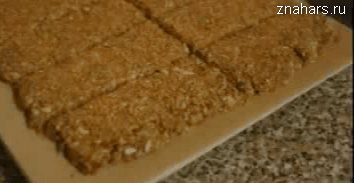

On a special drying oven, make flaxseed dough from ground seed with the addition of water and spices. Then we dry the thin cake.
That's all!
We do not use flaxseed flour for making bread. After all, ready-made store-bought flour is made from squeezed seeds. That is, the oil has already been squeezed out in advance. As a result, even the taste of such bread will be radically different.
Therefore, we make all preparations without purchased flour. You can either grind the seeds on a coffee grinder and use as flour, or grind already sprouted seeds in a blender with spices.
Flaxseed cookies
You can also make flaxseed cookies. In general, there are many recipes. I'll give you one, but a very useful one. There will be no flour or sugar.
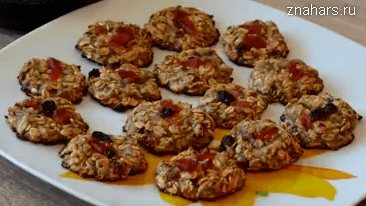

Here are the ingredients:
- 1 cup oatmeal
- flax and chia seeds
- 2 bananas
We take bananas and peel them. Then, on the board, grind them with a spoon or fork until gruel appears.
Transfer the prepared porridge into a separate bowl. Then we unload the oatmeal, some chia and flax seeds upstairs. Then we mix everything.
Next, put the foil on the board from the oven. Then take the resulting mixture with a tablespoon and put it on this foil.
At the same time, we make the correct molds in the form of small cakes with a spoon. When all the mixture is put on foil, then we send the resulting cakes to the oven for 15 minutes.
The benefits and harms of flax seeds
First of all, it is worth mentioning the nutritional value of this superfood. 100 g of seeds contain 534 calories. The total amount of fat is 42 g, of which 3.7 g is saturated, 29 g is polyunsaturated and 8 g is monounsaturated. Also, 100 g contains 30 mg of sodium and 813 mg of potassium. The total carbohydrate content is 29 g, of which 27 g is dietary fiber and 1.6 g of sugar. They also contain 18 g of protein, 25% of the daily recommended dose of calcium, 98% of magnesium, 1% of vitamin C, 31% of iron, 25% of vitamin B6 and 0 mg of cholesterol.
For those women who want to have thick hair, improve the condition of the skin and nails, it is useful to add 2 tablespoons of seeds for breakfast.They contain alpha linolenic acid and B vitamins, which are known to nourish hair and skin from the inside out, preventing dryness and flaking.
Women can use them in complex therapy and for uterine fibroids, but only as directed by the attending physician. Daily intake of seeds raw or in the form of a decoction resolves myomatous neoplasms and improves the general condition.
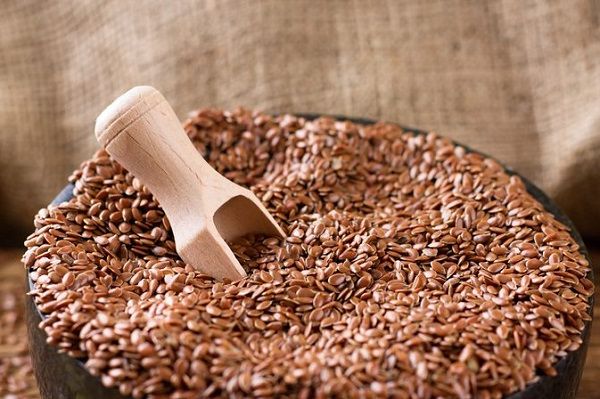

For men, they are shown as a means of strengthening masculine strength. With prostatitis and prostate adenoma, the use of flaxseeds is used for prevention and treatment. They also increase immunity and protect the male body against viruses and infections.
Flax seeds are high in fiber and low in carbohydrates. And such food, as you know, helps digestion, normalizes the work of the gastrointestinal tract and cleanses it of toxins and other harmful substances due to its valuable composition.
In addition, this product lowers cholesterol. The dietary fiber it contains is soluble, which means that it can delay the absorption and deposition of cholesterol and fats in the body. Likewise, bile containing cholesterol is not allowed to accumulate, which is then excreted naturally.
By the way, there are also white flax seeds. One of their most positive qualities is that they reduce the risk of developing cancer in people predisposed to this disease. They contain three important lignans, which are converted in the intestine to enterolactone and enterodiol. These so-called hormones are responsible for reducing the risk of cancer.
But there are certain cases when their consumption may be undesirable, for example, for pregnant and lactating mothers, as they lead to a sharp jump in the hormone estrogen and this can harm pregnancy or the baby. In addition, people with poor blood clotting are at risk, due to the fact that the semen reduces its clotting, there is a possibility of increased bleeding. Various studies have shown that some people may develop an allergic reaction to flaxseeds. This rarely happens, but it can still cause shortness of breath, nausea, vomiting, and abdominal pain.
Combination with other plants
In order for flax to take root well in the garden and become a worthy decoration for it, remember that the best combination of a plant is observed mainly with crops that have a similar development pattern and growing conditions.
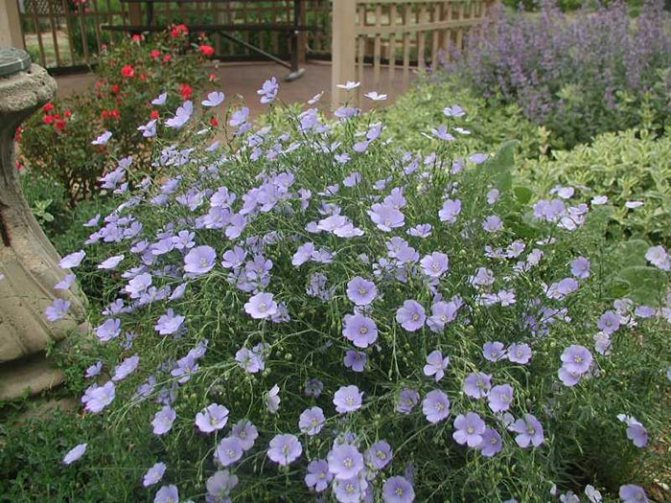

Linen in landscape design
Gardeners are very fond of using perennial blue flax in a variety of group compositions: in flower beds, in flower beds, in mixborders, colorful borders and even rock gardens.
An excellent combination of flax is observed with sun-loving and moisture-resistant plants. Perennial flax grows surprisingly well on Mauritanian lawns. It will ideally play in tandem with chamomile, marigolds, cornflowers and clover.
As we can see, perennial blue flax is a wonderful plant that, with very little effort on your part, can respond with the beauty of its blue petals that adorn your garden plot. Good luck!
Stunted sun bunny
Low-growing flax is a perennial, striking with an abundance of bright yellow flowers on numerous peduncles. The plant is herbaceous, with thin shoots, many amber flowers, collected in umbrella inflorescences. It is also planted among low-growing perennials or in flower walls. The plant is unpretentious. For the full development of the plant, an open sunny area with light fertile soil is enough. They are sown directly into the ground in spring or before winter. For flowering in the first year - for seedlings in March-April. 3 weeks after the emergence of seedlings, the crops are thinned out, leaving a distance of 20 cm between the plants. They are planted (with a lump of earth, since flax does not tolerate transplantation) in a permanent place in May. Prefers an open, sunny location.The best development is achieved on light, fertile, well-drained soils. Plants grown from seeds bloom more abundantly, stronger than when dividing a bush. Two weeks after germination, the plants are fed with a complex mineral fertilizer. Blooms in June - September, in the second year after sowing.
How to take flaxseeds for your intestines and stomach
For the treatment of the stomach, mucus is used, which is formed when such seeds are soaked. It envelops the walls of the stomach, prevents damage and relieves inflammation. Also, mucus reduces the secretory function, thereby reducing the activity of secretion of gastric juice.
Another important effect is the cleansing function of the product - it effectively removes toxins, thereby greatly facilitating the work of the digestive system and making food digestible.
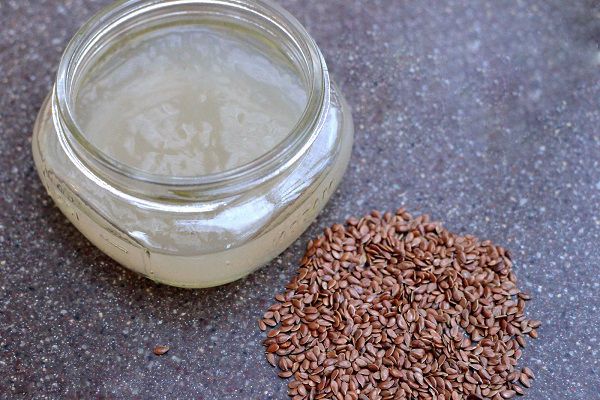

It is helpful to take this remedy to relieve stomach pains. Take 3 tablespoons of flax seeds and fill them with a liter of boiled water, cover with a towel and leave for 8-10 hours or overnight (preferably). Drink the resulting infusion half a glass throughout the day 20 minutes before meals. Repeat this daily for a month and even after the pain has disappeared.
There is another method of treatment for gastritis. Dissolve 1 tablespoon of seeds with a glass of water and simmer for about 5 minutes from the moment of boiling. Then let it brew for 2 hours under the lid. The finished broth, which has a slimy consistency, should be consumed 3-4 times a day.
For stomach ulcers, pour 2 tablespoons of flax in a thermos and half a liter of boiling water. Then close the lid, shake and leave for 2 hours, shaking occasionally. This infusion is drunk in half a cup an hour before meals three times a day. The course lasts 7-10 days.
And, of course, for the treatment to be effective, it is advisable to completely remove fried and flour foods, spicy foods from the diet, as well as exclude alcohol and cigarettes.
How to grow flax
Flax is sown in the spring; usually randomly. The crops are harrowed by embedding seeds in the soil to a depth of 1.5–2 cm. When sowing in rows, the distance between them is about 20 cm.
Flax is not afraid of cold weather, young seedlings are resistant to frost down to -3 ° C, so it can be sown already in the end of April
... After 1.5 - 2 months, flowers will appear, and then - rounded seed pods. Flax seed, which is a medicinal raw material, ripens in July - September, depending on the variety and sowing time.
For planting, it is advisable to choose an area where the soil is well-drained and fertilized. Despite its unpretentiousness, flax develops better on fertile soil
... When the buds are tied and the first flowers appear, you need to make sure that the soil does not dry out - at this time the plant is very
moisture sensitive
... In addition, you will only need to weed and loosen crops once or twice a season.
A bit of history
If bread in Russia was given the honorary title of "Head", then flax was considered a "Soul" among the ancient Russians. The history of its origin and practical application by man goes back to antiquity; numerous legends and myths of Ancient Egypt and India are associated with it.
It was linen that was used to embalm the bodies of the dead, all clothes for many centuries have been woven from this practical material, poor people wore coarse fabrics, and the rich used finer materials to sew their clothes.
What is needed to grow a plant
Gardeners plan to decorate their house territory or summer cottage with cold-resistant and rapidly blooming crops with garden flowers. But not everyone has the ability and desire to grow flower seedlings for a long time. Perennial flax can be successfully grown by sowing seeds directly into open soil. In this case, the plants will bloom for the next season. To enjoy earlier flowering, you can sow before winter.
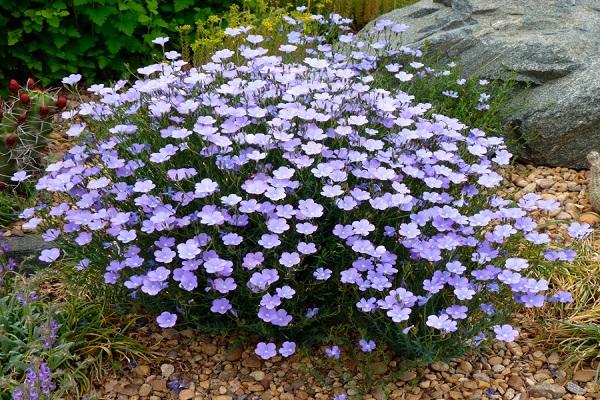

After 4 years, flax needs to be rejuvenated, since its decorative qualities deteriorate with age..
Therefore, for cultivation, you will need high-quality planting material, when choosing which you need to take into account the following parameters: the seeds should have a shiny surface and a yellow-brown color, be heavy, oblong in appearance, with sharp ends.
See also
Description of the Novobelgiskaya aster variety, planting and care featuresRead
Cultural
It is a crop crop used in the textile and cosmeceutical industries. One-year-old flax with a meter stem height is mainly widespread; there are other, dwarf species. There are many of them: large-flowered, fibrous, creeping, curly.
In private farms, a crop is grown for weaving mats, rugs, some housewives have hand-made homemade looms. Plants are mainly used to extract seeds from which hair and scalp care products are made. It happens that a plant is planted just so that the garden is pleasing to the eye, because the flowering flax is a wonderful sight.
Flax seeds: what are they used for?
The seed gives an unusual texture to many dishes. It is added to baked goods, salads. It resembles sesame seeds and tastes good.
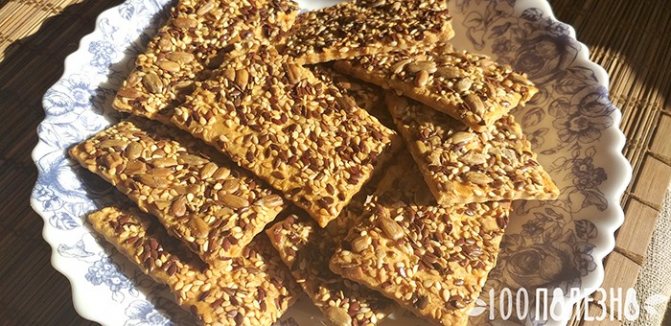

A natural product will make the dish more nutritious. It is mixed into smoothies, oatmeal, or yogurt.
I propose a recipe for a diet breakfast that will energize the whole day. Its preparation will not take much time.
Take a tablespoon each of oatmeal, flax, raisins. Procedure:
- Mix the ingredients, pour 0.5 cups of boiling water, leave overnight.
- Grind thoroughly with a blender in the morning.
- Heat slightly.
If desired, raisins can be replaced with other dried fruits or a fresh apple.
One of the most delicious flax dishes is urbech. You can find it in major supermarkets or make your own. This requires a coffee grinder or powerful blender. As a last resort, use a porcelain mortar.
Recipe:
- Pour a glass of seeds into a dry frying pan, warm up. Make sure they do not burn.
- Grind until a pasty consistency is obtained. A sign that everything is done correctly will be the release of fat.
- Mix with 50 g of honey.
- Pour into a glass jar, cover, store in the cold for no more than 5 days.
Try it, you won't regret it! This is delicious.
And healthy flaxseed oil is also made from the seed. It has a special aroma and a lot of healing properties. They are seasoned with salads, added to buns to give a beautiful golden hue.

